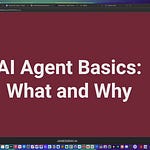Tony Seale has been at the forefront of linking data, combining creativity with technical expertise. His pioneering work integrating Large Language Models (LLMs) and Knowledge Graphs within large organizations has garnered widespread attention, primarily through his popular weekly LinkedIn posts. This ongoing contribution to the field has earned him the title ‘The Knowledge Graph Guy.’
Tony’s journey into AI and Knowledge Graphs began as a personal project, secretly developed from a computer under his desk while at an investment bank. What started as a passion soon transformed into deep expertise, enabling him to deliver mission-critical Knowledge Graphs into production for Tier 1 banks, helping them unlock the full potential of their data.
Today, as the founder of The Knowledge Graph Guys, Tony is dedicated to helping organizations harness the power of their data. His consultancy develops cutting-edge Knowledge Graphs that fuel innovation and growth in the rapidly evolving Age of AI.
Where to find Tony Seale:
What You Will Learn
In this episode of the Graymatter podcast, James Gray interviews Tony Seale, known as the Knowledge Graph Guy, to explore the significance of knowledge graphs in business strategy and AI. They discuss the foundational concepts of knowledge graphs, the role of ontology, and the importance of data relationships in leveraging AI effectively.
Tony emphasizes the urgency for organizations to build a strong ontological core to navigate the impending AI revolution and maintain their competitive edge. In this conversation, Tony Seale discusses the importance of knowledge graphs in modern data strategies, emphasizing their role in achieving total data connectivity and the need for decentralized approaches. He explains how organizations can create semantic data products and develop their ontological core iteratively.
The conversation also addresses the challenges organizations face in collaboration and the management of intellectual property within ontologies, highlighting the necessity for a strategic approach to data integration and innovation.
Key Takeaways
Knowledge graphs represent data as interconnected nodes and edges.
Ontology is crucial for capturing the semantics of data in a business context.
AI's effectiveness relies heavily on the quality of underlying data.
Organizations must focus on their data strategy to leverage AI effectively.
Large language models thrive on rich relationships within data.
Knowledge graphs can be used to train proprietary AI models.
LLMs can assist in building and refining ontologies.
A strong ontological core is essential for organizational identity.
Organizations must consolidate their data to avoid being outcompeted.
The AI revolution presents both challenges and opportunities for businesses. Knowledge graphs are becoming increasingly recognized as essential technology.
Total data connectivity is crucial for effective data management.
Connections within data provide context and meaning.
Organizations must stand up their data products for effective integration.
The development of an ontological core is an iterative process.
Engagement from all levels of the organization is necessary for success.
Organizations need to identify use cases to test knowledge graph strategies.
Collaboration between IT and business teams is vital for overcoming data silos.
Intellectual property within ontologies must be managed carefully.
The evolution of the ontological core is essential for ongoing innovation.
Episode
00:00 Introduction to Knowledge Graphs and Tony Seale
02:07 Understanding Knowledge Graphs
04:16 The Role of Ontology in Knowledge Graphs
06:24 AI and the Iceberg Analogy
09:40 Data Strategy as the Core of AI Strategy
11:16 Leveraging Relationships in Large Language Models
13:41 Training AI Models with Knowledge Graphs
17:31 Using LLMs to Build Ontologies
19:19 The Ontological Core and Its Importance
20:43 The Urgency of Building an Ontological Core
29:07 The Strategic Advantage of a Strong Ontological Core
36:26 The Rise of Knowledge Graphs
38:55 Decentralization and Data Connectivity
41:30 Creating Semantic Data Products
46:18 Iterative Ontology Development
50:56 Practical Steps for Implementation
56:05 Challenges in Organizational Collaboration
59:32 Managing Intellectual Property in Ontologies












